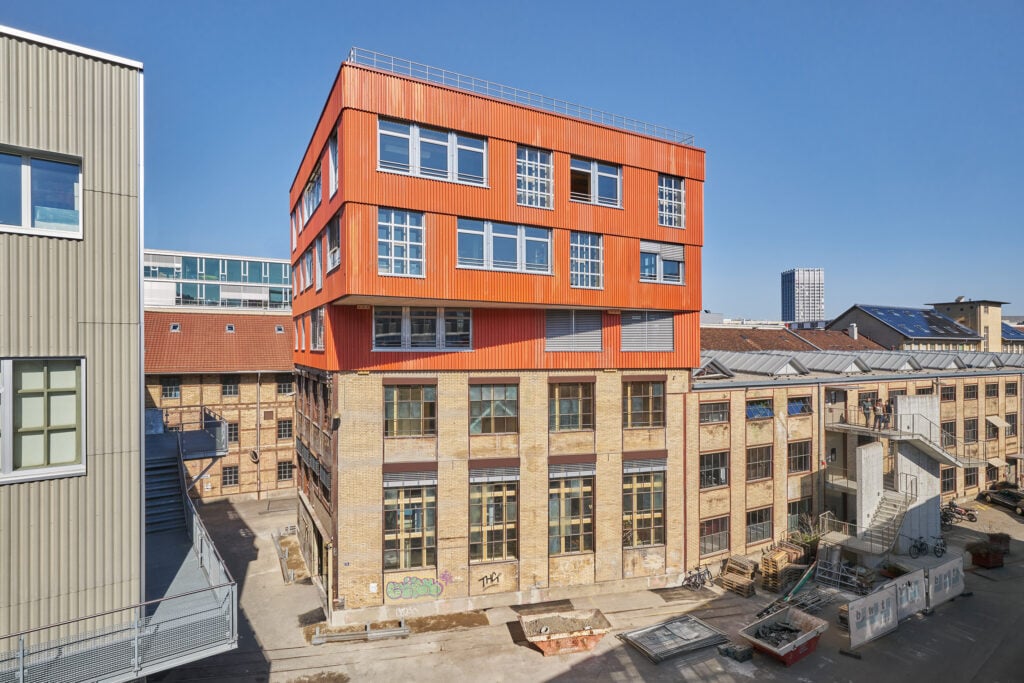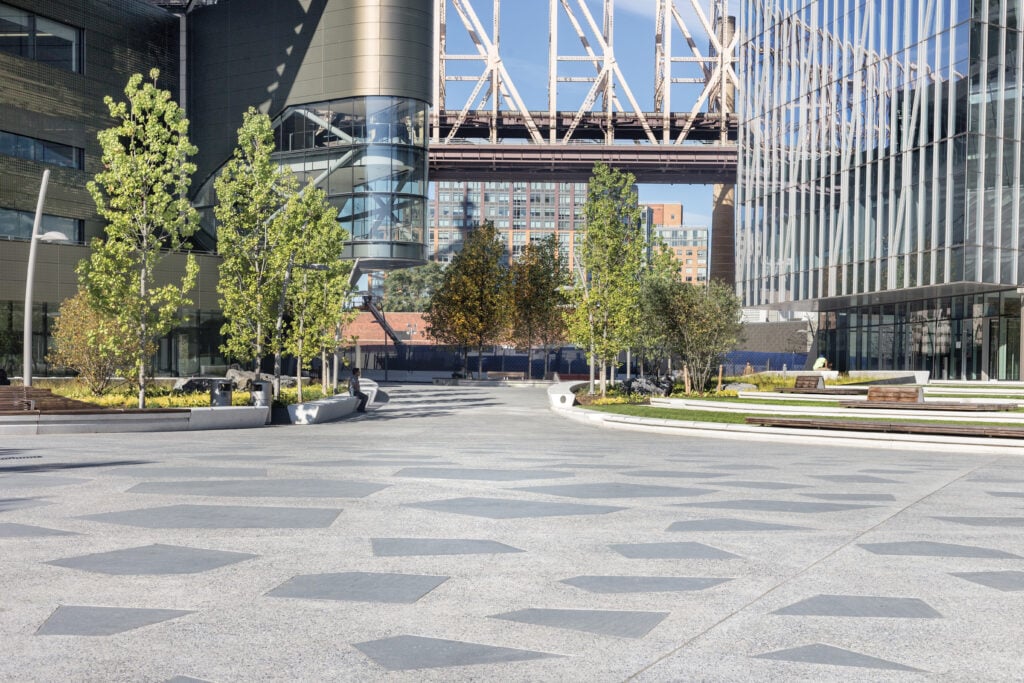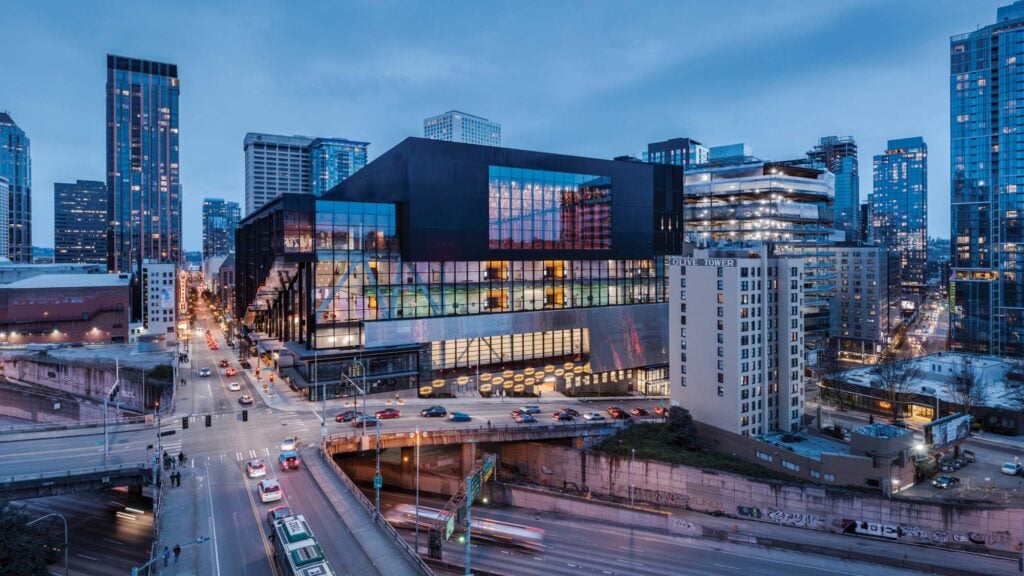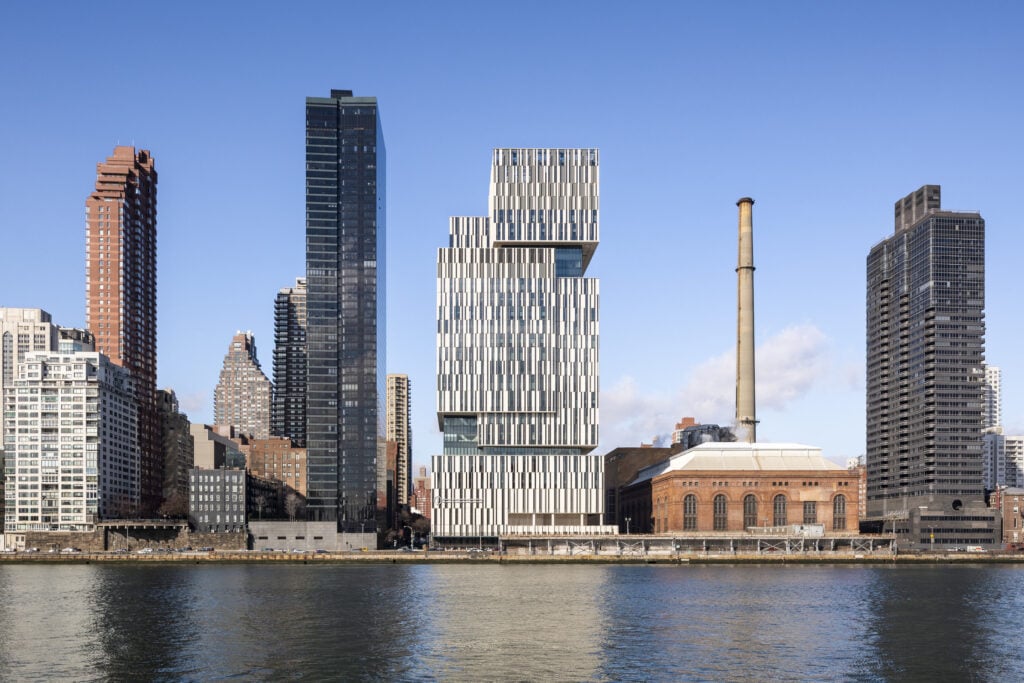
September 24, 2021
A Cancer Care Center Built to Weather the Elements

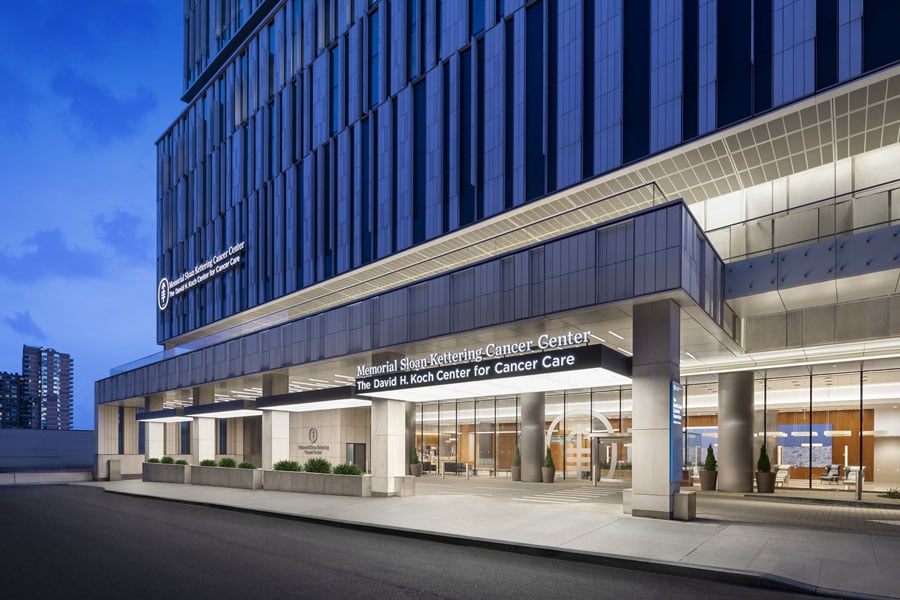
“We all saw, of course, that Sandy forced the evacuations of hundreds of patients across several hospitals in the floodplain,” says Mary-Jean Eastman, vice-chair and principal-in-charge at Perkins Eastman. “There was tremendous concern with how quickly this building could reopen if such an event were to occur again. As a result, the project was designed to be a self-sufficient island that will be able to remain open and operable for patients in the case of future storm events.”
“The building had to be extremely rigid because medical facilities are all so sensitive to vibration,” adds Jamie Butterfield principal at Perkins Eastman, explaining that it also needed to withstand “once-in-a-lifetime” storms that have now become regular.
To safeguard the hospital, retractable flood barriers were installed into the ground floor walls and activate in the event of a storm surge. All critical electric power and information systems were moved above potential flood levels, with clinical labs and materials management also raised to the upper floors. For emergencies, fuel oil for the heating system is entombed within a concrete structure capped by a submarine hatch-style entry. Sealing in the building is a watertight “bathtub” foundation with a surrounding drainage system, all foundational materials containing a waterproofing “admixture” to further reinforce the outer membrane. As a preventative measure, hot-dip galvanized steel below flood levels prevents potential corrosion from rising sea levels. In essence, the hospital becomes both a place of refuge and healing and a literal shelter from the storm for patients.
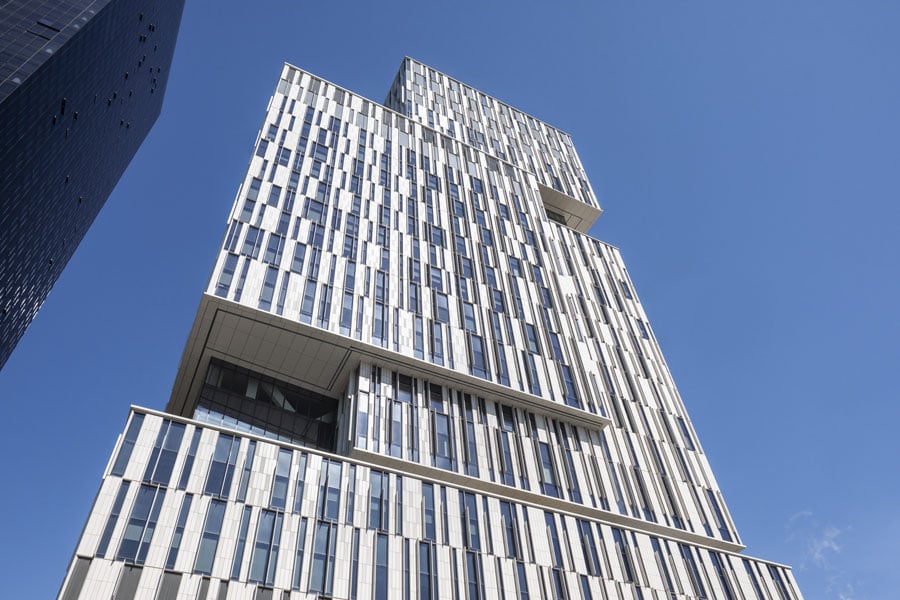
The building’s responsive skin is designed to weather the elements outside while also helping create comfortable interior conditions. Crafted out of blond terracotta with natural stone, the facade is splashed with a patina of weathered zinc in order to reflect light. Configured with an assortment of fin depths equipped to capture and deflect heat, it is “able to breathe” and reacts to external stimuli reducing solar gain while providing soothing natural light on the inside.
“Working in tandem with our collaborators, we designed an exterior envelope that is synchronized with the flexible and modular planning approach of the interior, provides long views and access to exterior terraces and allows an abundance of natural light while shading the sensitive interiors from glare and thermal heat gain,” explains Todd Schliemann, design partner at Ennead. He notes that through appropriate scale, materiality, lightness and texture, the team “sought to create an exterior architecture that would project the identity of MSK as a world leader in cancer care and provide an accessible and uplifting presence for the building which builds confidence in the quality of care within.”
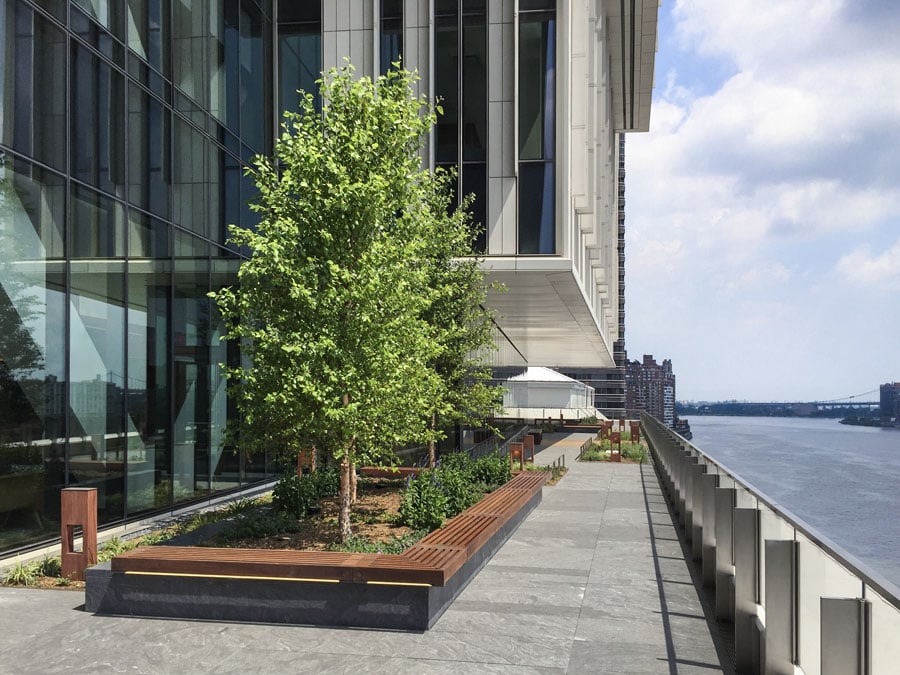
“The facade is calibrated to the building’s orientation and program to optimize access to daylight and create a comfortable interior patient environment. It was all about improving patient comfort while being energy efficient,” adds Butterfield. The interior is partitioned into a series of programmatic elements, with floors configured to “function as neighborhoods” and flow into compact—often interlocking—physician practices and allows patients to seamlessly receive multiple services across specialties.
Butterfield notes that the palette and materiality offers a “pleasing counterpoint not only to context but also the expectation of what a cancer center ‘looks like.’” Additionally, the building’s floorplan is centered on crafting an arrival sequence that flows elegantly and helps prevent anxiety or confusion during critical care.
“From the exterior expression to the interior programming to the variety of experiences within, the question we constantly were pushed to investigate from Memorial Sloan Kettering was: ‘Is this truly making a change in healthcare design?’” says Eastman. “This guiding principle forced innovations in patient experience and treatment protocols to create, we think, a new healthcare that departs from preconceived notions—one that creates a new relationship with and experiences within a cancer center.”
Would you like to comment on this article? Send your thoughts to: [email protected]
Latest
Profiles
How Barbara Buser Sparked a Reuse Revolution
After three decades of perfecting how to reclaim building components, the Swiss architect is changing the rules of construction in Basel.
Products
How to Specify Stone Sustainably
Essential considerations and resources for selecting stone that meets environmental standards without compromising design.
Projects
Seattle’s Vertical Convention Center Breaks the Mold
The LMN Architects–designed Summit Building reinvents the convention hall as a light-filled urban connector—and is one of few worldwide to achieve LEED Platinum certification.



